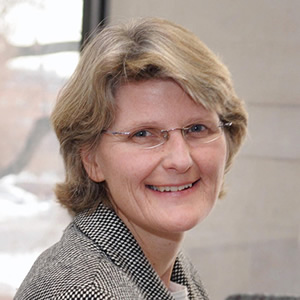
The Ebola virus has ravaged parts of West Africa for months, with the World Health Organization declaring the epidemic to be an international public health emergency. More than 5,000 people have died as a result of this outbreak, with no end in sight. Sierra Leone has admitted defeat, and the first cases have hit the United States and the European continent.
On October 16, the Yale Global Health Leadership Institute (GHLI), the Yale World Fellows, and the Yale Undergraduate Association for African Peace and Development (YAAPD) hosted a panel discussion to educate the Yale community on why this disease has proven so virulent.
GHLI Director Elizabeth Bradley moderated the conversation titled “Beyond the Headlines: Understanding the Ebola Epidemic & Crisis Relief Initiatives.” The panel also featured GHLI Senior Scientific Officer Kristina Talbert-Slagle; Operations Manager of Doctors Without Borders (MSF) and Yale World Fellow Christopher Lockyear; and Economic, Social and Development Affairs Officer for the UN Secretary-General and Yale World Fellow Susana Edjang.
Talbert-Slagle shared her scientific insights on the epidemiology of the Ebola virus, focusing on the virus’ method of droplet transmission. The Ebola virus is transmitted by direct contact with bodily fluids from a symptomatic patient, and “though it is natural to feel afraid, Ebola is not that easily transmissible.” She discussed that a lack of education in West Africa has resulted in a proliferation of Ebola cases, particularly through traditional burial practices where it is customary to touch the diseased body. She mentioned the possibility of the virus becoming airborne, though she assuaged fears. “The chance of this happening is not zero; however, no RNA virus has ever before changed its mode of transmission.” In order for this to happen, there would have to be circumstances that drive the virus to mutate in order to survive, “and unfortunately,” Talbert-Slagle commented, “the virus has proven remarkably virulent to date.”
Christopher Lockyear examined the practical approaches being taken in response to the Ebola epidemic. He warned that “the epidemic is unpredictable and far from over…the international community is in uncharted waters.” Given that no cure currently exists, MSF is concerned with treating patients’ symptoms in order to allow the person to develop the antibodies and strength needed to overcome the virus themselves. The biggest impediment to containing the disease has not been a lack of financial resources, but as Lockyear noted, a lack of well-trained manpower. “It’s costly, resource-intensive, and requires a lot of will and determination,” but as Lockyear pointed out, “containing the Ebola virus is not rocket science, and the world needs to come together for the people of West Africa who are facing the effects of this traumatic disease.”
Susana Edjang examined the United Nations’ response to the Ebola virus. Edjang noted that the U.N. and World Health Organization (WHO) intervened in a virtually resourceless environment. Liberia had only 51 doctors before the epidemic for a population of four million. Furthermore, only five countries had contributed to the Africa Public Health Emergency Fund prior to the outbreak. With only two international public health emergencies ever declared before the Ebola virus – avian flu and polio – the U.N. Secretary-General convened a response with multiple agencies that focused not just on public health but also on the effects to food, education, and transportation. The U.N. Mission for Ebola Emergency Response, Edjang discussed, focuses on five strategic objectives: stopping the outbreak, treating the infected, ensuring essential services, preserving stability, and preventing outbreak in uninfected countries. Like Lockyear, Edjang noted that what is needed most at this time are 600 skilled clinicians willing to travel to West Africa.
The panelists also warned that a second-order crisis from the Ebola virus has been a collapse of the health system within Liberia and Sierra Leone. As a result, doctors have seen a spike in deaths from otherwise preventable diseases such as malaria with people afraid to go to hospitals, creating an emergency within an emergency.
Education has been key in combating the Ebola virus both in West Africa and around the world. “At the beginning of this outbreak,” Edjang noted, “communication with the community was very poor, as people were scared to go to Ebola treatment centers.”
For the Yale audience, the panelists united over three takeaway messages: solidarity is needed over fear; people are needed over money; and the real crisis is in West Africa, not the United States.
Both Lockyear and Edjang affirmed that this is not something that MSF or the U.N. is going to run away from. “We are looking forward to identifying the last patient plus 21 days symptom-free.”
